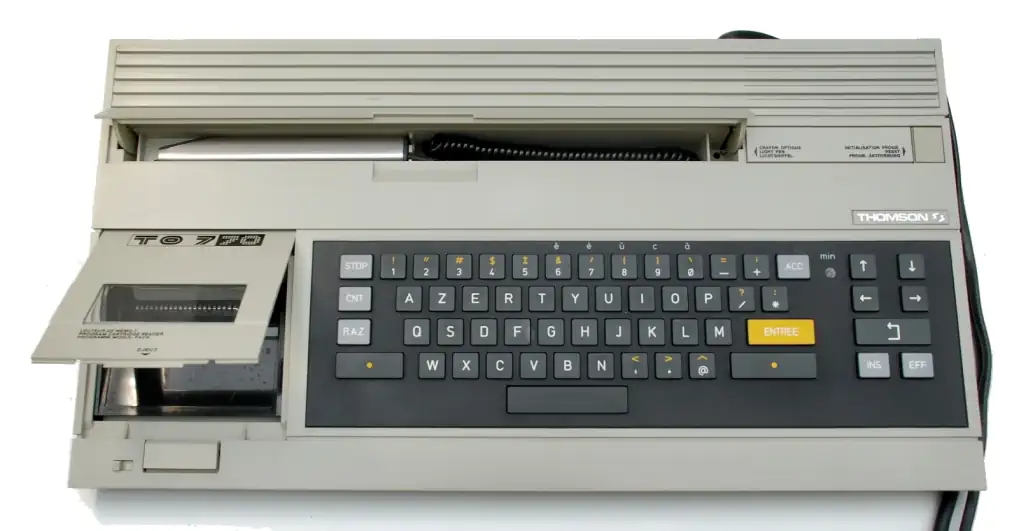Thomson TO7/70
The Thomson TO7/70 is an upgraded version of the TO7. The machine was slightly more expensive, but also had quite some upgrades. Memory was increased from 22kByte to a full 64kByte (16 kByte used as VRAM). The 70 stands for 64+6, the machine's ROM was increased from 4kByte to 6kByte to include code for the educational network that the machine was designed to operate on.
The CPU was changed to the Motorola 6809E. This 6809 and the 6809E are the same chip, but the 6809 has an internal two-phase clock generator, while the 6809E needs an external (hence the E) clock generator. The latter allowed the chip to run at higher speeds by increasing the frequency of the clock generator.
The graphics capabilities were upgraded, and the number of colors went from 8 to 16, but still with the 2 colors per 8 pixel limitation. The color palette is 4-bit RGBI, with 8 basic colors and 1 intensity bit for a total of 16 different colors.
The TO7/70 was compatible with it's predecessor the TO-7 but software specifically developed for the 7/70 could not be used on the TO-7.

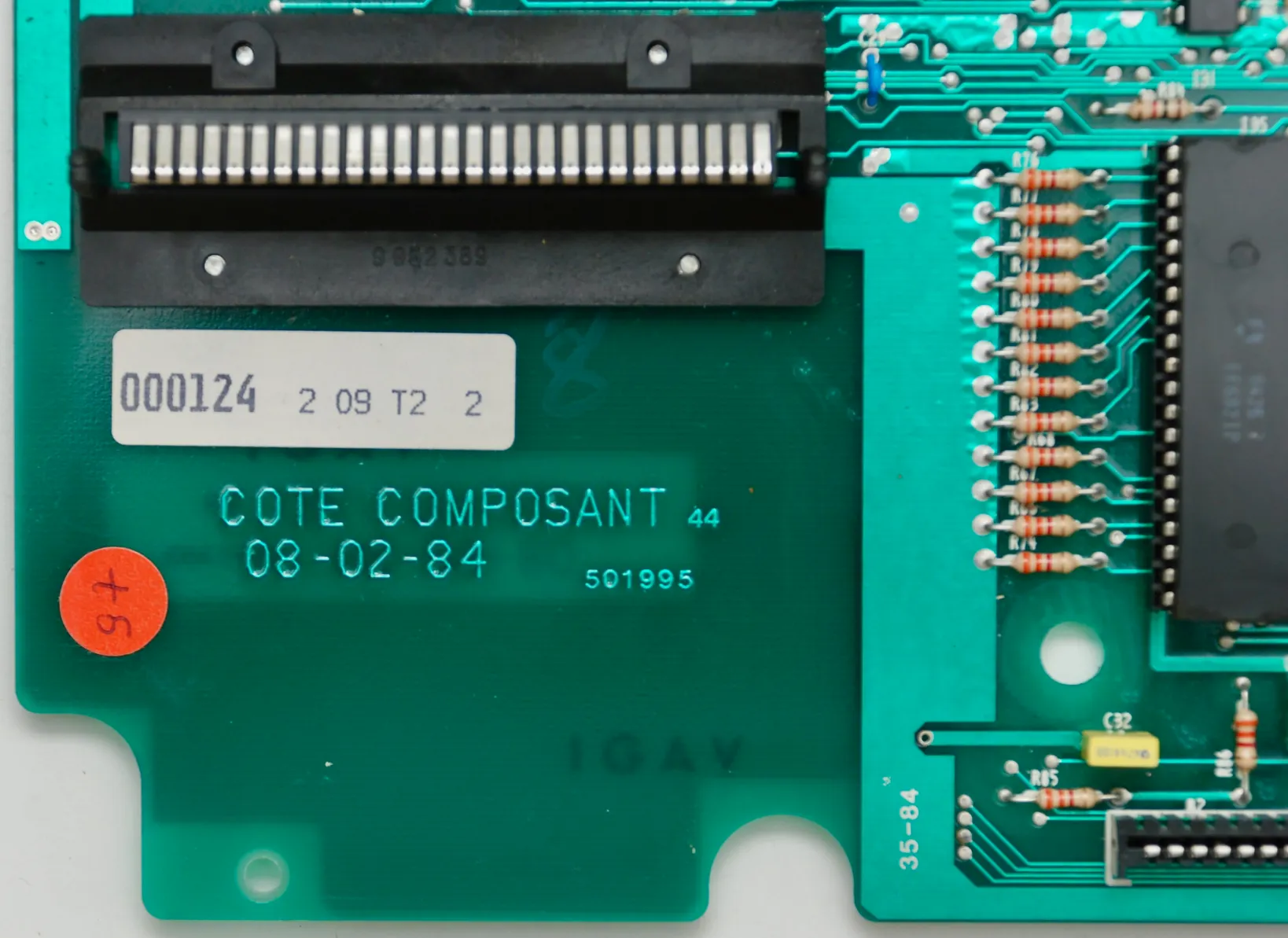
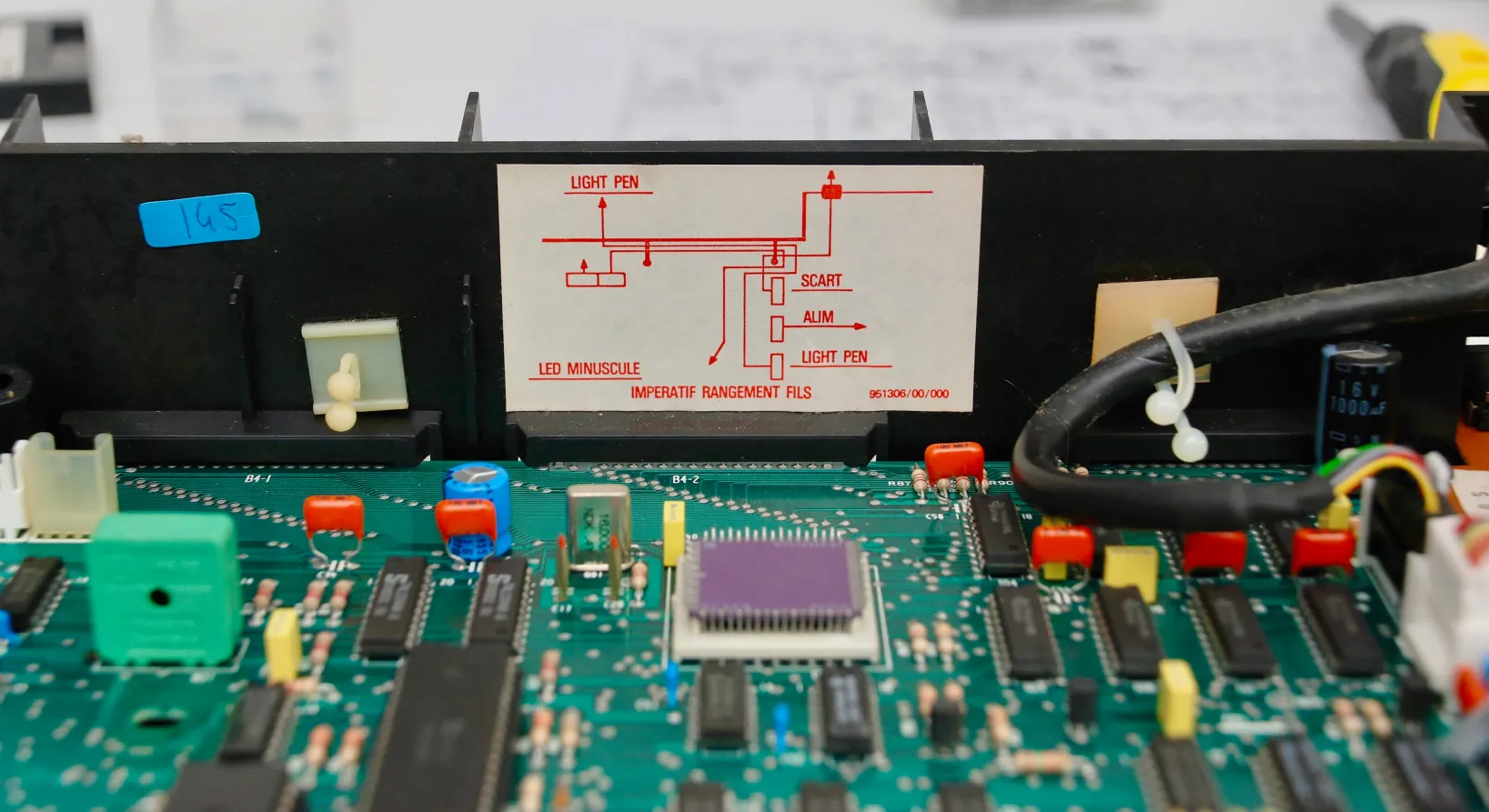
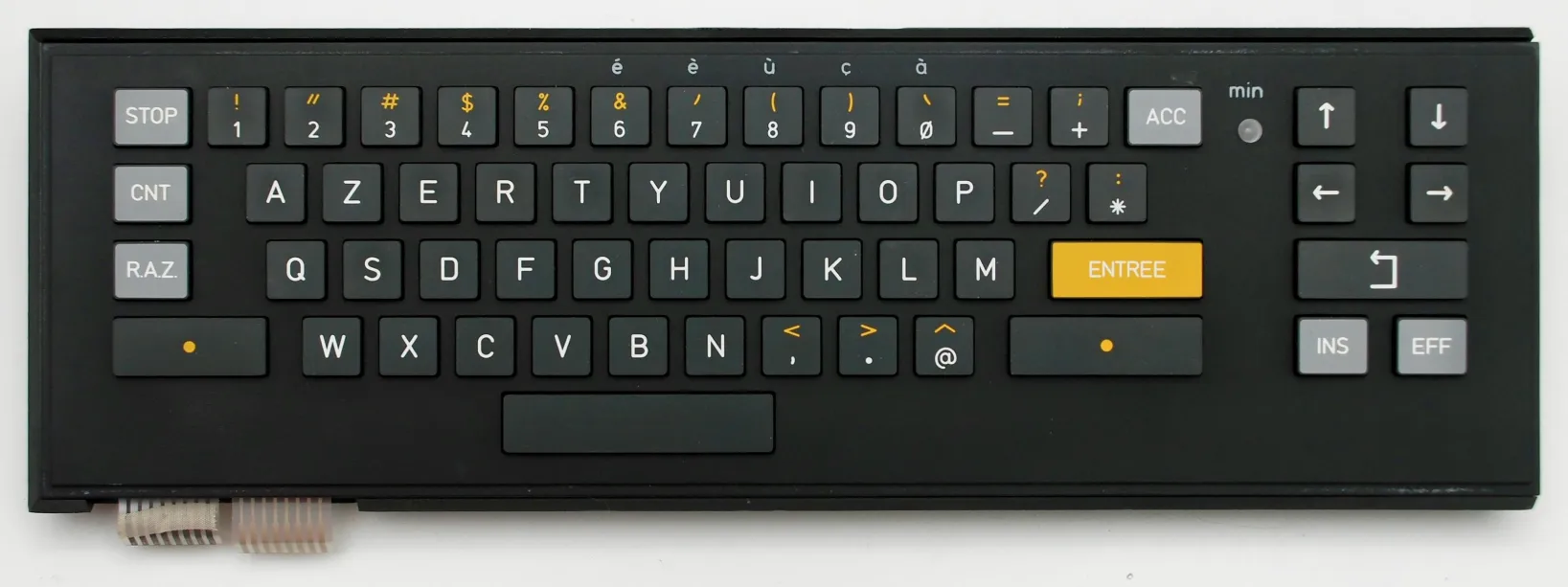
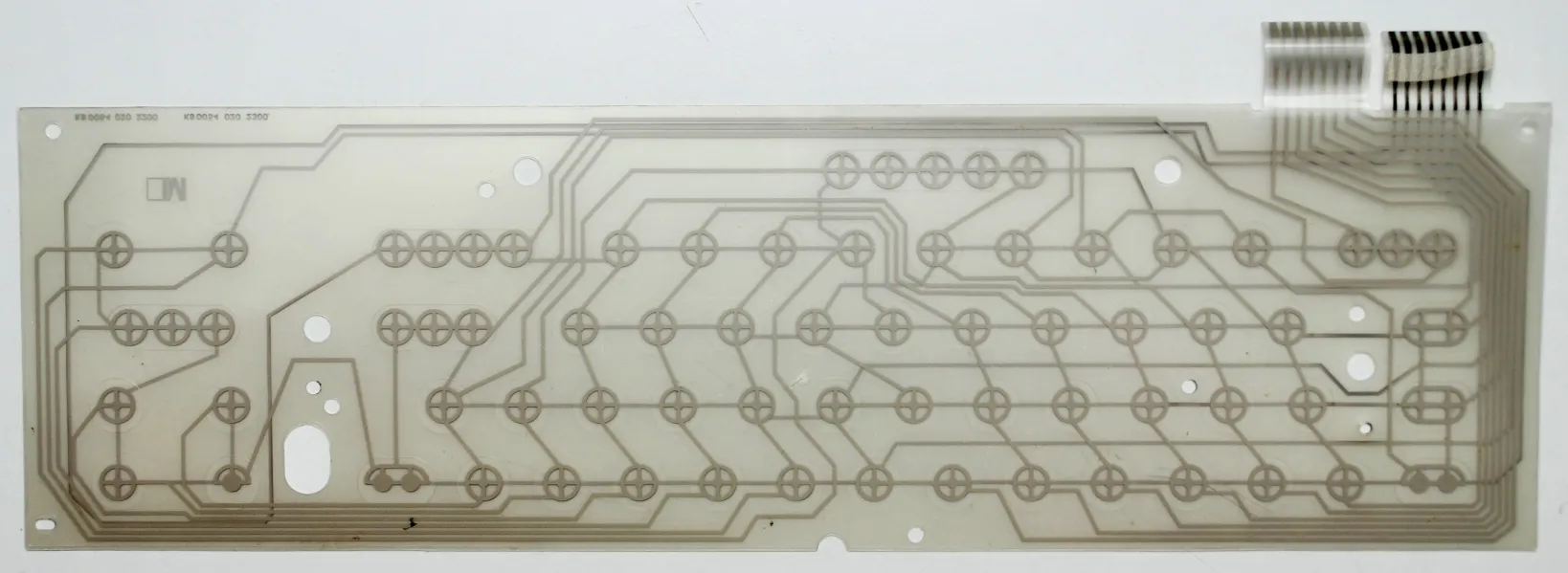
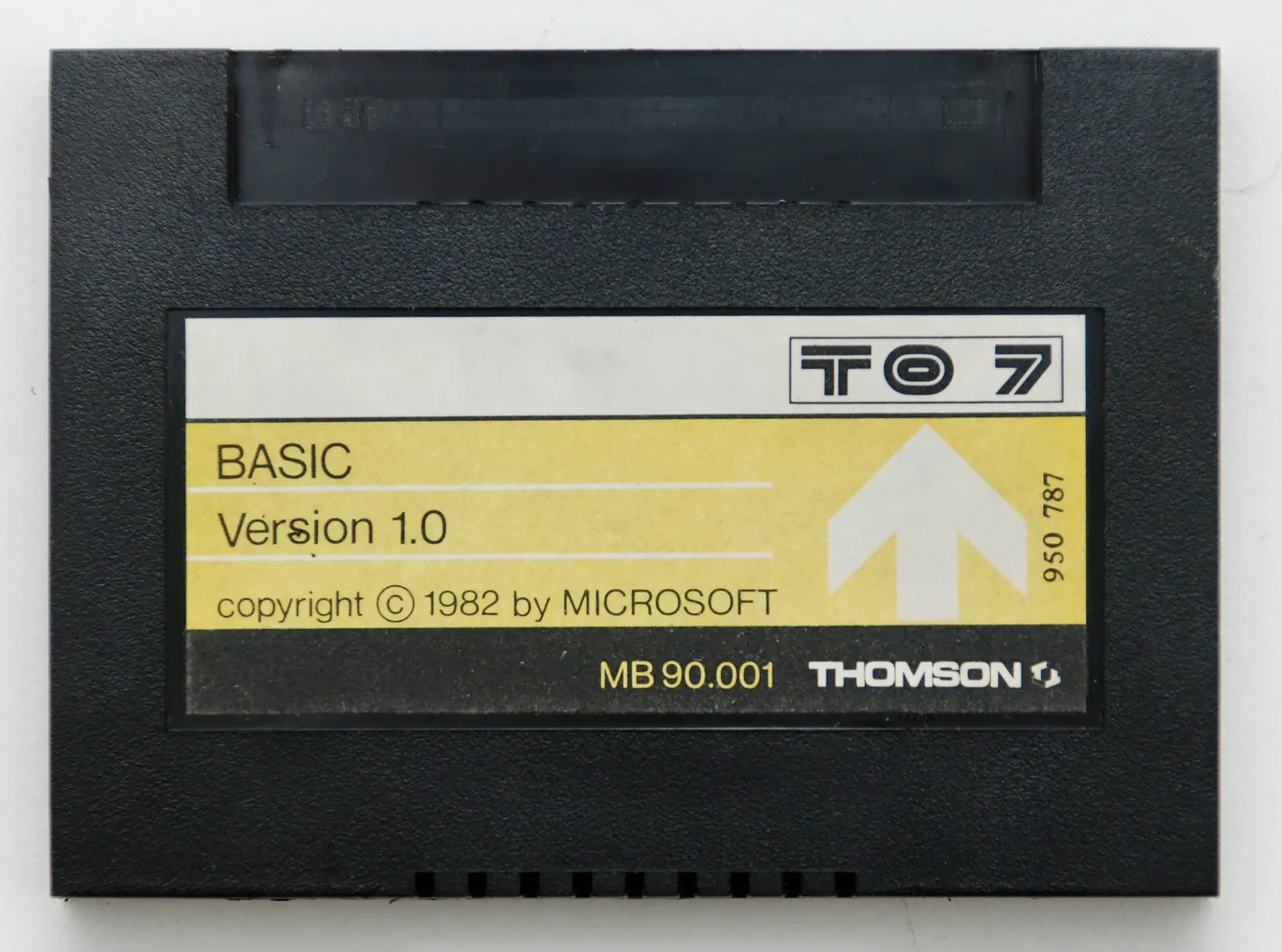
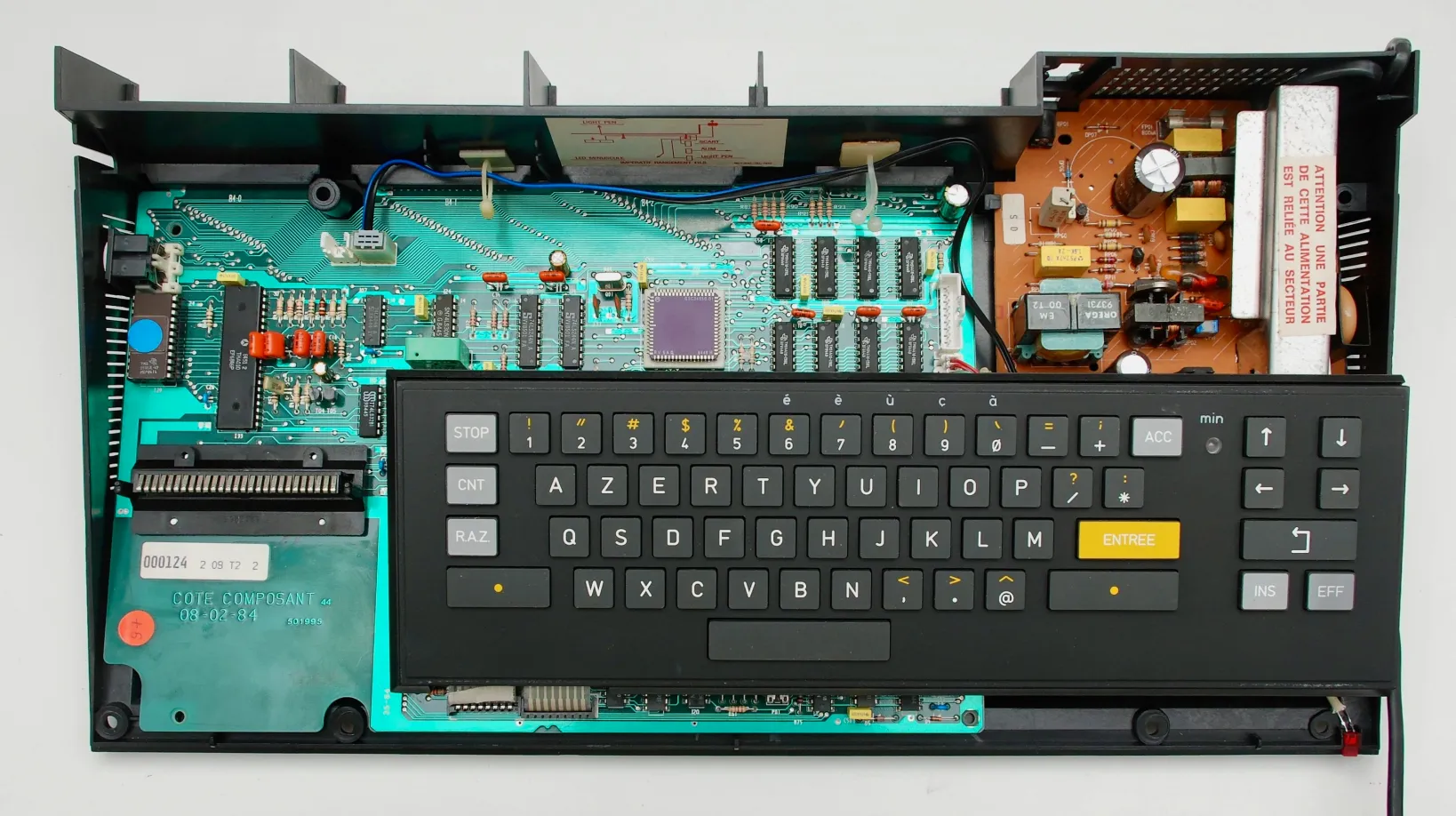
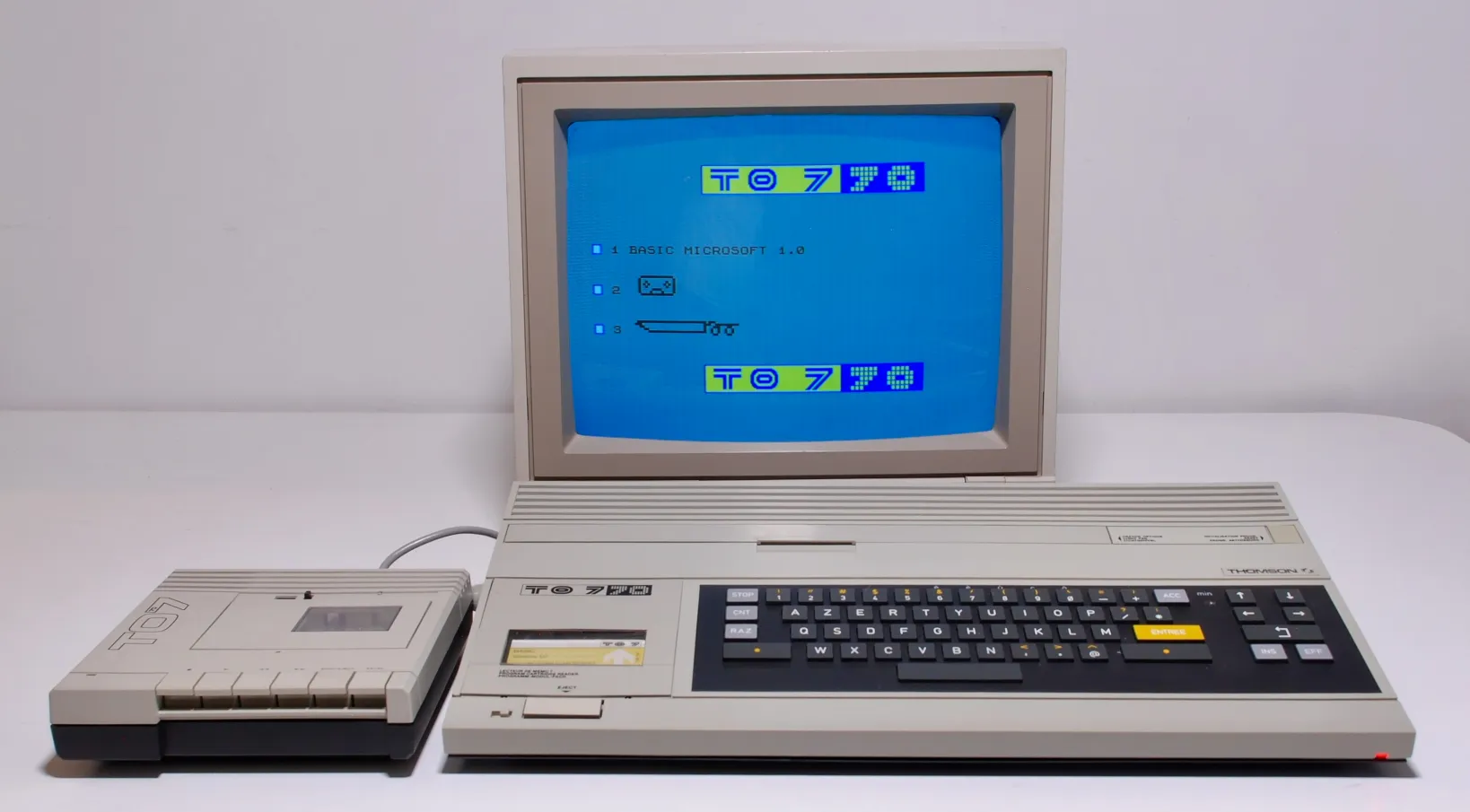
Motorola 6809 CPU
The Motorola 6809 is an 8-bit microprocessor with some 16-bit features. It was designed by Motorola's Terry Ritter and Joel Boney and introduced in 1978. Although source compatible with the earlier Motorola 6800, the 6809 offered significant improvements over it and 8-bit contemporaries like the MOS Technology 6502, including a hardware multiplication instruction, 16-bit arithmetic, system and user stack registers allowing re-entrant code, improved interrupts, position-independent code and an orthogonal instruction set architecture with a comprehensive set of addressing modes.
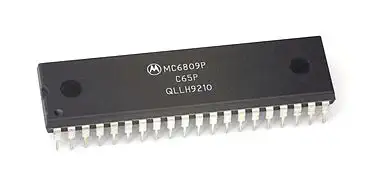

ROM: 9kB
VRAM: 16kB Sound Chip none Sound 1 bit square wave Display Chip EFGJ03L or MA4Q-1200 Gate Array Display 320x200 16 color (2 colors per 8p) Best Text 40x25 Best Color 16 colors Best Graphics 320x200 Sprites none System OS Microsoft BASIC Storage Cassette Tape Original Price 3750FF
